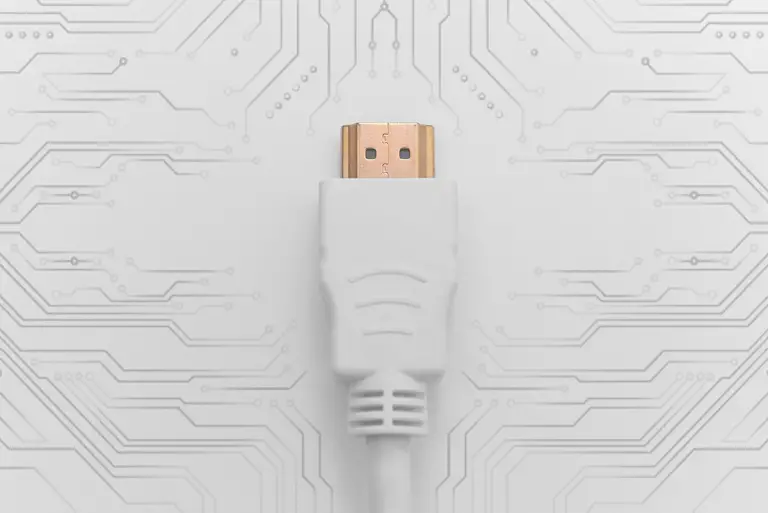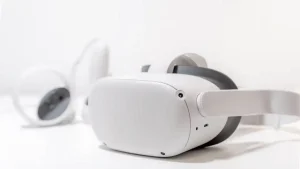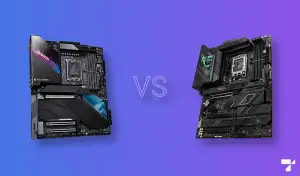While some might say that an HDMI cable is just an HDMI cable, there’s actually a lot more to it. Factors such as length, type, and transmission speed are all very important when it comes to HDMI cables. At certain distances, a premium high-speed HDMI cable can make a massive difference. So, what is the best ultra high-speed HDMI cable?
Below we have reviewed 10 options for you. Half of them are for distances of less than 30 feet, while the other half are for distances of 30 feet or greater. We have curated these HDMI cables based on the key factors mentioned above, therefore, whichever one you go for, you won’t be making a mistake. Just choose the one with the available length that you prefer.
Best ultra high-speed HDMI cables for distances less than 30 feet
1. Zeskit 8K Ultra HD HDMI Cable
If you are looking for a fantastic HDMI cable with ample bandwidth that can transmit a high-resolution signal, and won’t put a dent in your wallet, this one by Zeskit is a great choice.
It comes in multiple lengths and utilizes a braided cable. While this might not seem like much, when you route your cable in tight spots where you might damage it, and don’t want to move it too often, this can add that extra bit of protection you need.
As far as the signal goes, you have a total throughput of 48Gbps, which means 8K at 60Hz, or 4K at 120Hz. This is more than you’d need but it’s there anyway. You get support for Dynamic HDR and eARC, so you have excellent sound and a rather wide dynamic range, too.
Overall, the Zeskit 8K Ultra HD HDMI Cable is a great choice for just about any situation where you need a high throughput HDMI cable.
2. Monoprice Ultra 8K HDMI Cable
Ask anyone what the best budget cables are, for just about any purpose, and they’ll probably point you towards Monoprice. They’re a manufacturer that makes great cables without any fuss or unnecessarily high pricing, and the Ultra 8K HDMI Cable is a great choice for exactly that reason.
The cable comes at a 6 feet length, which is just right for a TV to an amp, or a TV to multimedia player setup. There’s also eARC support, so you can get that nice audio quality with plenty of details without any quality loss. To add to this, Dynamic HDR ensures that you have a wide dynamic range with great shadows and highlights, optimized on a scene-by-scene basis.
As far as bandwidth goes, you’re looking at 48Gbps, which is pretty much the standard for a nice-performing cable nowadays. You can have 8K at 60Hz or 4K at 120Hz, which is great, and when you consider there is no quality loss, you’re all good.
At the end of the day, while the Monoprice Ultra 8K HDMI Cable may not do anything special, it’s still a great choice when you want a reliable HDMI cable, with high throughput, that you won’t need to change anytime soon.
3. Belkin Ultra HD High Speed HDMI Cable
The Belkin Ultra HD High-Speed HDMI Cable is a fantastic option when it comes to high-speed HDMI cables. It has an elegant design with excellent performance to boot.
With this cable, you get a throughput of 48Gbps, which is enough for both 4K at 120Hz and 8K at 60Hz. This is, quite honestly, more than sufficient for anyone looking for an ultra-high-speed HDMI cable, which makes the Belkin a cable you can buy, set, and forget for at least a few years.
All the necessary technologies are supported, including HDR Dolby vision and HDR 10. It also has great compatibility with devices like consoles, various TVs, and multimedia devices, so you won’t need to worry about that.
Last but not least, Belkin claims that this cable is compatible with any HDMI device, is durable, and has an ultra-reliable connection to stream smoothly between streaming your devices. At this price, honestly, it’s a great choice for a High-speed HDMI cable that you’ll set up once and hopefully use for years to come.
4. Cable Matters Ultra 8K HDMI Cable
Whether you need more cables and don’t want to spend too much, or you just want to have a spare or two lying around, you should be looking at Cable Matters. The Ultra 8K HDMI Cable comes in a 3 pack at 6.6 feet, which is pretty much the perfect length for shorter distances, and the price is more than great for what you’re getting. The three cables in the pack are different colors, so you don’t mix them up if you have a lot of cables.
Throughput is at 48Gbps, which is more than enough for modern-day use, and you have ARC support for detailed audio. It works with Dolby Atmos and DTS:X 5.1 and 7.1, so you should be covered in terms of audio, too. To make things even better, you’re looking at a versatile cable that’s compatible with consoles like the PlayStation 4 Pro, or the Xbox One, and will allow you to make the most out of said consoles.
Overall, if budget is a big concern, this three-pack by Cable Matters should be your first choice. Great quality, great pricing, and no quality issues – what more could you want?
5. Pacroban 8K HDMI 2.1 Braided Cable
One thing that many cable manufacturers tend to cut corners on is the build quality of the cables. This is why after a few months of use, you’ll notice your cable fraying, and you won’t know why your picture is cutting out, or you don’t have audio, or you have a host of other issues. The Pacroban 8K HDMI 2.1 Braided Cable aims to change all that.
To begin with, the cable itself is braided. You can’t bend it too far and damage it, you can’t rip it apart, and friction won’t do much damage either. The plugs are high quality and are gold plated, so they last a good while, too, and won’t fall apart even after extended use.
Signal throughput is what you’d expect – 48Gbps bandwidth, and you get things like uncompressed 8K content and Dynamic HDR with HDCP 2.2. There’s zero quality loss here, both in terms of video, and in terms of audio.
All things considered, if you’re going to be putting a cable in risky places, or routing it through the wall, a braided cable is a must. And the Pacroban 8K HDMI 2.1 Braided Cable is a great choice, especially when you factor in the price.
Best ultra-high-speed fiber optic HDMI cables for distances of 30 feet or greater
1. Monoprice 138627
Monoprice is somewhat popular in the world of cables because they have some really great premium options that work great in a variety of situations. The 138627 is an ultra-high-speed HDMI cable, one that can deliver the signal with zero quality loss at distances of 30 feet.
Even though expensive, this cable comes with a high dynamic range that lets you enjoy stunning colors with brighter whites and darker blacks. You get a maximum resolution of 8K Ultra HD, and you have an eARC feature so you get that immersive audio experience, too.
The cable is Monoprice’s Slimrun AV HDR fiber optic cable, which is both thinner and softer than a traditional cable. This allows you to get a tighter bend radius and a cable that’s a lot more resistant to day-to-day wear and tear. If you’re going to be using it in tight spots where it might be damaged, this can actually make a massive difference.
Overall, if you need to run your HDMI signal over lengths of 30 feet, and don’t want any quality loss in the video or audio department, Monoprice’s Slimrun AV HDR cable is the one to go. And yes, the price is more than worth it.
2. CABLEDECONN HDMI Optic Cable
CABLEDECONN may not be the first brand that comes to mind when you’re looking at HDMI cables, but this option is an excellent choice for people who need an HDMI cable at distances of 30 feet, without any loss of audio or video quality. With a data transfer rate of 48 gigabits per second, you can rest assured this is the solution you need.
To begin with, this cable comes with zero signal loss. There’s support for HDCP2.2, CEC, EDID, and eARC, so you’re more than covered in terms of technologies. To use eARC, note that you’ll need to connect the cable’s source end to the amp’s output and the display end to the TV.
What’s interesting is that the cable comes with a requirement for the correct connection direction which you’ll have to respect if you want it to work well. However, that’s not too much of an issue.
Last but not least, you’re looking at a thick fiber optic cable that comes with a lifetime warranty. This is a durable choice that you’ll be able to set and forget, and you won’t need to change it anytime soon. Just what you need for a high-quality solution.
3. BIFALE 8K Fiber Optic HDMI Cable
With quite a lot of positive reviews and a lifetime warranty, it’s easy to see why the BIFALE 8K Fiber HDMI cable is one of our recommendations. Even though somewhat expensive considering it’s a 10 feet cable, it still has a lot going for it.
To begin with, it can support 8K at 60Hz, or 4K at 144Hz, which is quite a lot in terms of throughput. And to make things even better, with support for Dynamic HDR10, eARC, and HDCP 2.2, you will have absolutely no quality loss in terms of video and audio. This is basically what you’re after, which makes this an ideal solution.
A thing to keep in mind is that this is a directional cable. There is a source end and a display end, and if you want it to work, you’ll have to have it plugged in the right way. However, if you do get that right, you’re looking at a bulletproof solution that you can set and forget, and will last you a good while. Yes, it might be a bit expensive, but it’s more than worth it when you consider the quality you get, and the durability you can expect.
4. FURUI 8K Fiber HDMI Cable
33 feet is the perfect length for many, and if you want the best possible Fiber Optic HDMI 2.1 cable, this one by FURUI is a strong contender for the title. It also comes in different lengths as well along with a lifetime warranty. This means that any issue will be taken care of pretty much instantly. Even though this might not seem like much for a cable, this is an expensive cable, so this kind of warranty does mean quite a bit.
The cable itself is a directional fiber optic cable, which means you have a marked source and display end. If you want them to work, you’ll have to plug them in the right way. Given that it’s a set and forget cable, this shouldn’t be too much of an issue.
In terms of technologies, you’re completely covered. You even have eARC, which ensures no audio quality is lost when you use this cable to connect an amp to your TV for one remote solution. There’s also Dolby Vision, HDCP 2.2 and 2.3, DTS:X, and a host of other technologies. Overall, with wide compatibility, this high-speed HDMI cable can actually be your go-to solution for a variety of situations.
5. RUIPRO 8K HDMI 2.1 Cable
The RUIPRO’s 8K HDMI cable pretty much has you covered in just about any scenario. And it’s a great cable that comes at a reasonable price along with great performance.
To begin with, this has a throughput of 48Gbps, which puts you at a maximum of 8K at 60Hz, or 4K at 120Hz. There’s support for Dynamic HDR, eARC, HDCP 2.2, and Dolby Vision Slim, so you’re more than covered here. Excellent dynamic range, no audio quality loss, everything is in check.
There are plenty of positive reviews for the RUIPRO, but even without them, the fact that you have a long cable that performs great is more than enough. RUIPRO even gives it a five-year warranty, which is more than what you’ll get with many budget options. This ensures that when you set it up, even if you route it behind furniture, you won’t need to remove it anytime soon.
The price is actually pretty reasonable, which is another thing the RUIPRO has going for it. If you need a long cable, this is the one to go for.
Fiber Optic vs Traditional (Copper) HDMI cables
One thing you’ll come across pretty often is the saying that “any HDMI cable will do the job”. While at shorter distances of around 5 or 6 feet, that might be true, copper HDMI cables do come with certain limitations that make them an outright bad idea for some scenarios.
What’s the difference?
To understand why copper cables aren’t all that good, let’s take a look at how they’re made. Inside the main cable, you have multiple smaller copper lines. Now, this might not sound like a problem, but copper does have a limit to the throughput it can handle. That is why, even though regular HDMI caps out at 65 feet, you will often see problems coming up at distances as short as 50 feet. 50 feet is still quite a lot, though, so what gives?
Well, the thing is that getting those 50 feet isn’t all about the cable. It’s about the devices you’re using, the quality of the cables themselves, and a few other factors, and you’ll need them all to be perfect in order for it to work at 50 feet. And that is why it’s often the same to assume that at anything over 30 feet, you’ll have issues with conventional HDMI unless everything is perfect.
Enter fiber optic cables. Unlike copper, fiber optic cables use lasers to transmit data and rely on light. Light moves faster than electricity, which means that using a fiber optic cable means better quality. To add to this, with copper cables, you have a thing known as electromagnetic interference, and radio frequency interference. These interferences cause attenuation, or signal loss, which is why you have a limit with copper cables.
This is the main difference between the “new and improved” HDMI fiber optic cable. There’s no EMI, nor is there RFI, and with no interference, you can cover greater distances without any quality loss. This is why at distances of over 30 feet, you want to go for a fiber optic cable.
Comparing the two cable types
Of course, this would all be theoretical if you can’t compare both types, right? So, let’s consider that comparison.
The first thing you’ll notice is that due to electromagnetic interference, you’ll notice noise in the picture. This makes the picture grainy, which is visible even if you aren’t an expert. And if you think you won’t have that kind of noise in your environment, note that it’s there if you have any kind of wireless device, and a copper cable is going to pick it up instantly. Even at distances of less than 5 feet, you’ll be able to spot the difference side by side with a fiber optic cable.
Furthermore, if you take things to a longer distance, you have an even worse signal loss. Transmitting a 4K picture is pretty much impossible at anything over 20 feet, as half of the signal that the TV would receive would be just noise and grain. Some manufacturers try solving this by adding an amplifier to the HDMI cable. This boosts the degraded signal and allows it to travel longer. However, this won’t bring back the lost signal, and you still get bad quality, just at a longer distance.
On the other hand, if you go for a fiber optic cable, things become much different. Since light has no resistance, and there is no quality loss, you can get an absolute identical image, with no grain, even at longer distances.
To make things even more interesting, when you have a signal that demands high throughput, like a 4K image at 120Hz, or an 8K image at 60Hz, a traditional copper can’t transmit it, even at shorter distances. A fiber-optic one, on the other hand, won’t have an issue with it.
Final thoughts – Is fiber optic worth it?
While there’s no denying that the advantages of a fiber optic cable are obvious, it also comes with two downsides. One of them is the fact that this is a directional cable, so you have to keep it plugged in the right way. This isn’t too much of a problem, honestly, and you can easily deal with it when setting things up.
The other problem is pricing. While even the most high-quality copper HDMI cables won’t set you back too much, the same can’t be said for fiber optic cables. They’re expensive, and oftentimes a lot more than what you’d want to pay for one. This is a major setback, and since it’s a rather new technology, those prices may not come down anytime soon.
However, one thing still stands – if you need to transmit a signal that requires high bandwidth, or you need to send a signal further than 30 feet, fiber optic HDMI cables are pretty much your only choice. Sure, you can try signal boosters, you can try amplified HDMI cables, you could try plenty of alternatives – there’s certainly no shortage.
But at the end of the day, if you want to keep things simple, your best call would be to pony up and get yourself a good, high-quality fiber optic HDMI cable. Yes, it’s expensive, but it’s an investment that you won’t need to make again anytime soon. It’s a matter of need, really. And if you need a high-speed HDMI cable for long distances, go ahead and pick the fiber optic one you like most from the list above.



